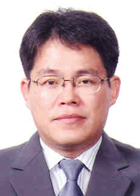KL-1 Biotherapeutics from Nature: Discovery and Development of Novel Bioactive Proteins
Barry R. O'Keefe
Director, Molecular Targets Program Center for Cancer Research
Chief, Natural Products Branch, Developmental Therapeutics Program
Division of Cancer Treatment and Diagnosis, National Cancer Institute, USA
The search for bioactive substances from natural products has traditionally involved the isolation and structure elucidation of small molecules able to be extracted with organic solvents from their source organisms. The seminar will feature more recent efforts to identify bioactive proteins and peptides from the aqueous extracts of source organisms. Reasoning on how and why such efforts are merited will be discussed. Examples of novel biotherapeutics, with potential with activity against cancer and viral infections, from the aqueous extracts of marine organisms, will be reported; including the clinical development of the protein griffithsin for use in preventing SARS-CoV-2 infection.
KL-2 Organic Matter Management in Rice Paddy: Grand Challenges and Gold Opportunities on Global Warming
Pil Joo Kim1,2
1Division of Applied Life Science, Gyeongsang National University, Jinju 52828, Republic of Korea,
2Institute of Agriculture and Life Science, Gyeongsang National University, Jinju 52828, Republic of Korea
Sequestering carbon in the soil is a relatively natural way of removing carbon dioxide from the atmosphere with fewer impacts on land and water, less need for energy, and lower costs. Better land management and agricultural practices could enhance the ability of soils to store carbon and help combat global warming. Periodical application of organic amendments has been strongly suggested to improve soil quality and sequestrate atmospheric carbon dioxide (CO2) in cropping lands. However, in flooded rice fields, organic amendments significantly increase the emission of methane (CH4) which has 28 times greater global warming potential (GWP) than CO2 for 100 years, and then we faced an inevitable dilemma in organic amendment management. Here, we compared the influence of organic amendments on net GWP which combined two greenhouse gas (GHG) fluxes and soil carbon (C) stock change with CO2 equivalent in a typical rice cropping field. Finally, we tried to find a way of organic amendment management that can decrease global warming’s impact on rice paddies. Most organic amendments highly increased annual CH4 fluxes by around 2-5 times (14.0-27.6 Mg CO2-eq) over 7.1 Mg CO2-eq. ha-1 in no organic matter addition (NPK). An average of 2.1 Mg CO2-eq. ha-1 of soil C stock was annually depleted in the NPK treatment, but most organic amendments except for biochar increased annual soil C stock by approximately 3.7-9.3 Mg CO2-eq. ha-1. However, this small increase in soil C stock did not contribute to decreasing net GWP. However, biochar showed strong potential to decrease net GWP in rice paddies, due to less CH4 emission (15.9 Mg CO2-eq. ha-1 year-1) and higher soil C stock increase (19.0 Mg CO2-eq. ha-1 year-1). Our investigations suggest that most organic amendments except for biochar may have a negative impact on mitigating global warming in the flooded rice cropping system. To address this, we need to develop an organic amendment management technology to reduce the net global warming potential in a rice-producing system.
Keyword: methane; nitrous oxide; soil carbon sequestration; net global warming potential
KL-3 Transcriptional regulation of salt tolerance in rice
Wenhua Zhang1*, Ping Deng1, Longyun Xiao1, Joong Hyoun Chin2, Wen Jing1
1 College of Life Sciences, State Key Laboratory of Crop Genetics and Germplasm Enhancement, Nanjing Agricultural University, Nanjing 210095, China,
2 Department of Integrative Biological Sciences and Industry, Sejong University, Seoul 05006, Republic of Korea
Improving grain yield and stress tolerance is an important goal of rice breeding. In this presentation, we reported two transcriptional factors RST1 and OsMYBc, and their functions in regulation of salt tolerance in rice. RST1 encodes the AUXIN RESPONSE FACTOR 18 protein, which negatively regulates nitrogen metabolism by transcriptional repression of OsAS1. Mutation of RST1 promotes nitrogen utilization and reduces NH4+ accumulation induced by salt stress, thus improving the ability to survive under saline conditions and, consequently, increasing grain yield. The superior haplotype RST1Hap III decreased its transcriptional repression activity and contributed to salt tolerance and grain weight.
In another work, we identified a MYB coiled-coil type transcription factor OsMYBc, which binds to the OsHKT1;1 promoter. OsMYBc positively regulated OsHKT1;1 transcription, and the OsMYBc itself was regulated by E3 ligase MSRFP. We further identified the physiological roles of the interactions of OsMSRFP and OsMYBc in regulating the expression of OsHKT1;1, which regulates Na+ transport and salt tolerance in rice. Together, our work unravels transcriptional regulation of salt tolerance associated with N metabolism and Na+ content in rice, and provides a new strategy for the development of tolerant cultivars.



